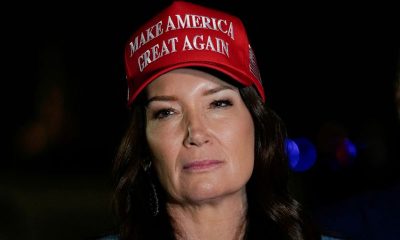Economy
U.S. government awards $45 million for long COVID clinics
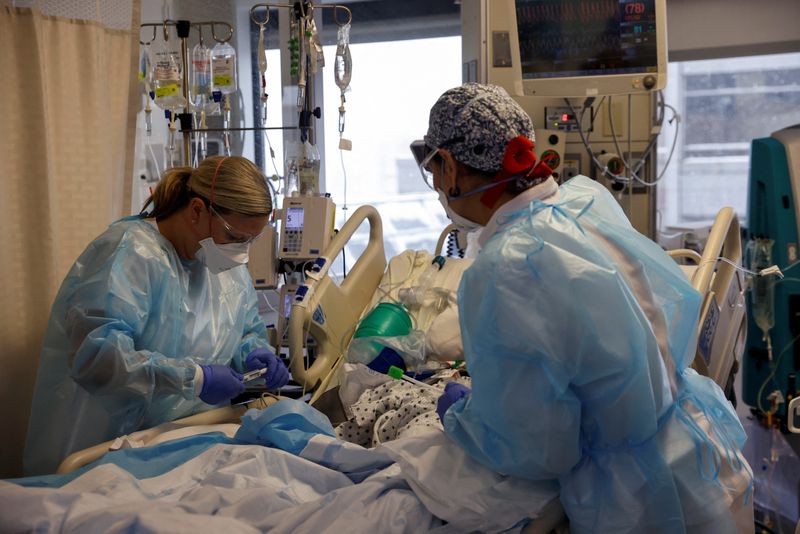
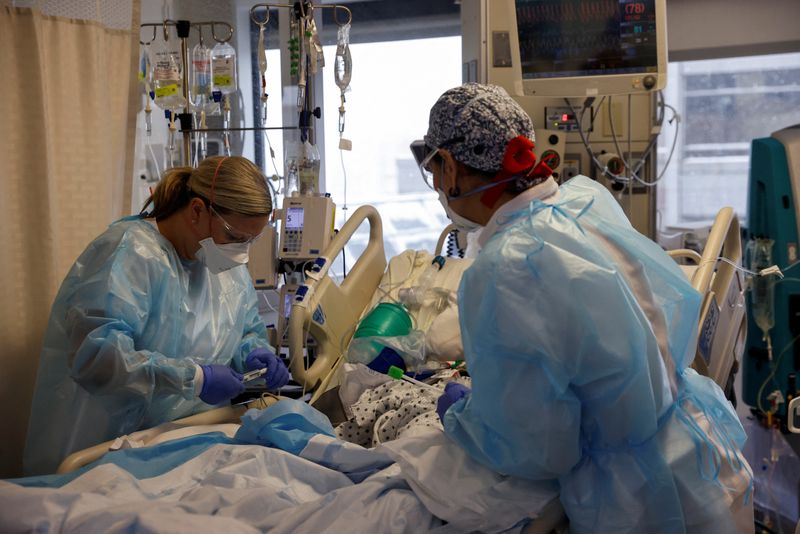
© Reuters. Medical staff treat a coronavirus disease (COVID-19) patient in the Intensive Care Unit (ICU) at the Cleveland Clinic in Cleveland, Ohio, U.S., January 7, 2022. REUTERS/Shannon Stapleton/File Photo
2/2
By Ahmed Aboulenein
WASHINGTON (Reuters) – The U.S. government is awarding $45 million in grants to help clinics treating long COVID develop new models of care and expand access, the Department of Health and Human Services (HHS) said on Wednesday.
Nine clinics will receive $1 million grants annually over the next five years through the Agency for Healthcare Research and Quality (AHRQ) within HHS, the department said.
President Joe Biden had tasked HHS last year with developing a national action plan to tackle long COVID, a complex, multi-symptom condition that arises months after a COVID-19 infection and leaves many of its sufferers unable to work.
“The Biden-Harris Administration is supporting patients, doctors and caregivers by providing science-based best practices for treating long COVID, maintaining access to insurance coverage, and protecting the rights of workers as they return to jobs while coping with the uncertainties of their illness,” said HHS Secretary Xavier Becerra.
The funding will be used for increasing in-person and virtual visits, establishing new satellite clinics, and an education initiative aimed at growing referrals. Limited knowledge and acceptance among clinicians has contributed to delays in diagnoses and referrals.
It will also go towards social services, hiring interpreters, group patient programs, and behavioral health support. The grants prioritize access for underserved, rural, vulnerable, and minority populations that are disproportionately impacted by long COVID.
The condition affects nearly 7% of all U.S. adults and 2.3% of the overall population and has cost an estimated $386 billion in lost wages, savings and medical bills, according to an analysis in April by the Solve Long Covid Initiative, a non-profit research and advocacy group.
More than 200 symptoms have been linked to the syndrome – including extreme fatigue, difficulty thinking, headaches, dizziness when standing, sleep problems, chest pain, blood clots, immune dysregulation, and even diabetes.
No proven treatments are available but research is underway. The National Institute of Health (NIH) is conducting a $1.15 billion effort, the RECOVER program, which launched two clinical trials in July that will evaluate at least four potential treatments.
Economy
Russian central bank says it needs months to make sure CPI falling before rate cuts -RBC
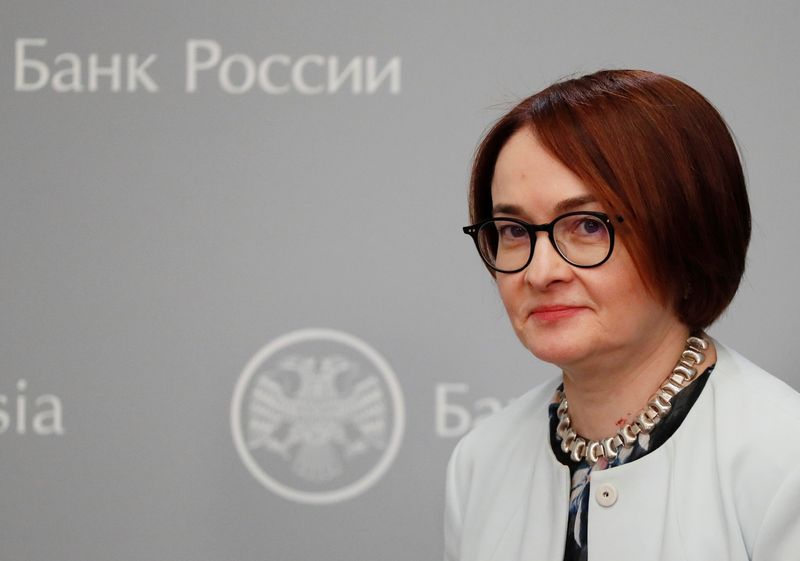
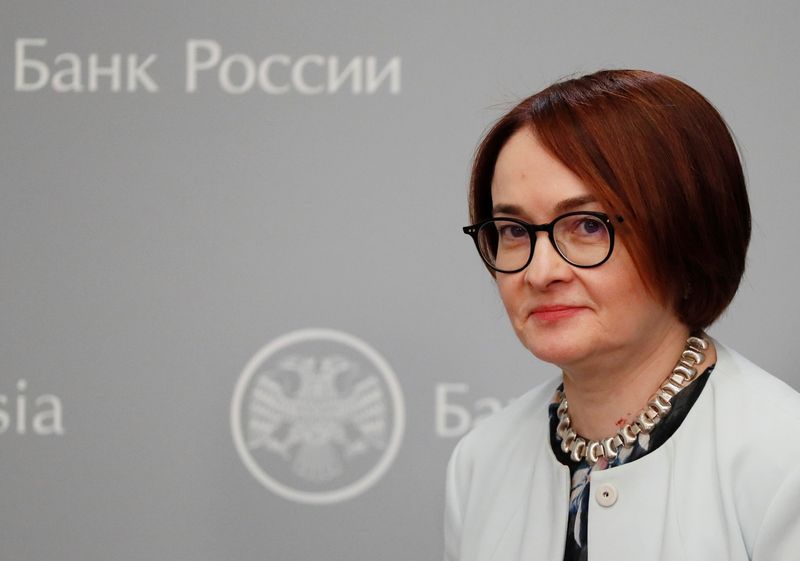
© Reuters. Russian Central Bank Governor Elvira Nabiullina attends a news conference in Moscow, Russia June 14, 2019. REUTERS/Shamil Zhumatov/File Photo
MOSCOW (Reuters) – Russia’s central bank will need two to three months to make sure that inflation is steadily declining before taking any decision on interest rate cuts, the bank’s governor Elvira Nabiullina told RBC media on Sunday.
The central bank raised its key interest rate by 100 basis points to 16% earlier in December, hiking for the fifth consecutive meeting in response to stubborn inflation, and suggested that its tightening cycle was nearly over.
Nabiullina said it was not yet clear when exactly the regulator would start cutting rates, however.
“We really need to make sure that inflation is steadily decreasing, that these are not one-off factors that can affect the rate of price growth in a particular month,” she said.
Nabiullina said the bank was taking into account a wide range of indicators but primarily those that “characterize the stability of inflation”.
“This will take two or three months or more – it depends on how much the wide range of indicators that characterize sustainable inflation declines,” she said.
The bank will next convene to set its benchmark rate on Feb. 16.
The governor also said the bank should have started monetary policy tightening earlier than in July, when it embarked on the rate-hiking cycle.
Economy
China identifies second set of projects in $140 billion spending plan
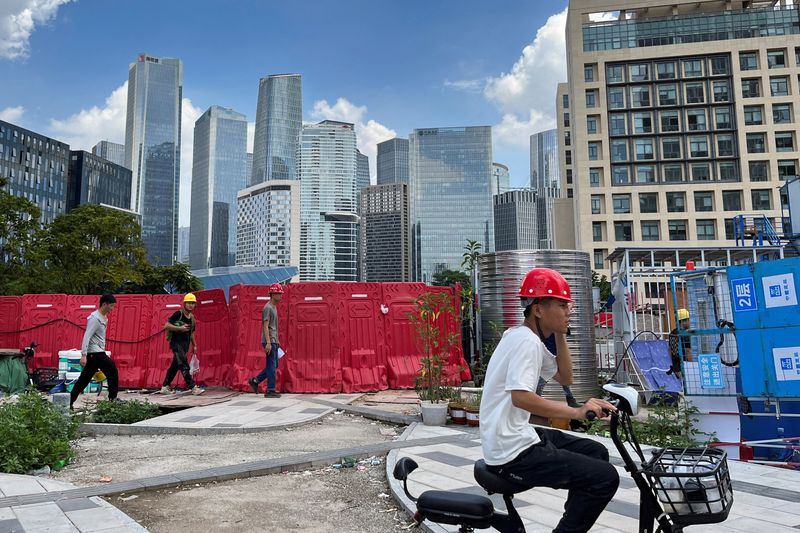
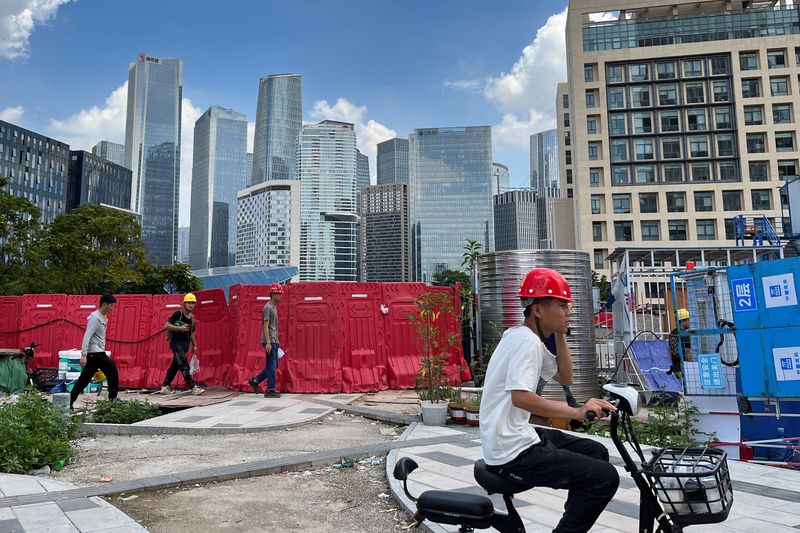
© Reuters. FILE PHOTO: Workers walk past an under-construction area with completed office towers in the background, in Shenzhen’s Qianhai new district, Guangdong province, China August 25, 2023. REUTERS/David Kirton/File Photo
SHANGHAI (Reuters) – China’s top planning body said on Saturday it had identified a second batch of public investment projects, including flood control and disaster relief programmes, under a bond issuance and investment plan announced in October to boost the economy.
With the latest tranche, China has now earmarked more than 800 billion yuan of its 1 trillion yuan ($140 billion) in additional government bond issuance in the fourth quarter, as it focuses on fiscal steps to shore up the flagging economy.
The National Development and Reform Commission (NDRC) said in a statement on Saturday it had identified 9,600 projects with planned investment of more than 560 billion yuan.
China’s economy, the world’s second largest, is struggling to regain its footing post-COVID-19 as policymakers grapple with tepid consumer demand, weak exports, falling foreign investment and a deepening real estate crisis.
The 1 trillion yuan in additional bond issuance will widen China’s 2023 budget deficit ratio to around 3.8 percent from 3 percent, the state-run Xinhua news agency has said.
“Construction of the projects will improve China’s flood control system, emergency response mechanism and disaster relief capabilities, and better protect people’s lives and property, so it is very significant,” the NDRC said.
The agency said it will coordinate with other government bodies to make sure that funds are allocated speedily for investment and that high standards of quality are maintained in project construction.
($1 = 7.1315 renminbi)
Economy
Russian central bank says it needs months to make sure CPI falling before rate cuts -RBC
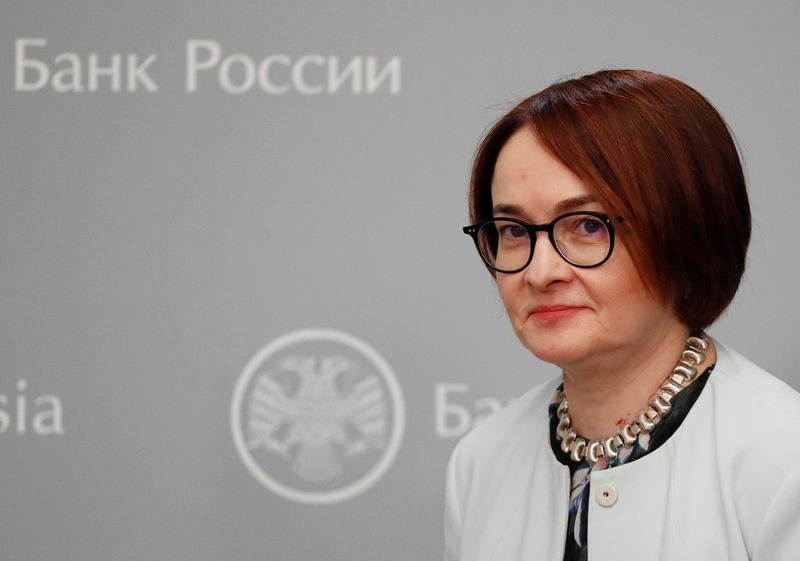

© Reuters. Russian Central Bank Governor Elvira Nabiullina attends a news conference in Moscow, Russia June 14, 2019. REUTERS/Shamil Zhumatov/File Photo
MOSCOW (Reuters) – Russia’s central bank will need two to three months to make sure that inflation is steadily declining before taking any decision on interest rate cuts, the bank’s governor Elvira Nabiullina told RBC media on Sunday.
The central bank raised its key interest rate by 100 basis points to 16% earlier in December, hiking for the fifth consecutive meeting in response to stubborn inflation, and suggested that its tightening cycle was nearly over.
Nabiullina said it was not yet clear when exactly the regulator would start cutting rates, however.
“We really need to make sure that inflation is steadily decreasing, that these are not one-off factors that can affect the rate of price growth in a particular month,” she said.
Nabiullina said the bank was taking into account a wide range of indicators but primarily those that “characterize the stability of inflation”.
“This will take two or three months or more – it depends on how much the wide range of indicators that characterize sustainable inflation declines,” she said.
The bank will next convene to set its benchmark rate on Feb. 16.
The governor also said the bank should have started monetary policy tightening earlier than in July, when it embarked on the rate-hiking cycle.

 Forex3 years ago
Forex3 years agoForex Today: the dollar is gaining strength amid gloomy sentiment at the start of the Fed’s week

 Forex3 years ago
Forex3 years agoUnbiased review of Pocket Option broker

 Forex3 years ago
Forex3 years agoDollar to pound sterling exchange rate today: Pound plummeted to its lowest since 1985

 Forex3 years ago
Forex3 years agoHow is the Australian dollar doing today?

 Cryptocurrency3 years ago
Cryptocurrency3 years agoWhat happened in the crypto market – current events today

 World3 years ago
World3 years agoWhy are modern video games an art form?

 Commodities3 years ago
Commodities3 years agoCopper continues to fall in price on expectations of lower demand in China

 Economy3 years ago
Economy3 years agoCrude oil tankers double in price due to EU anti-Russian sanctions

